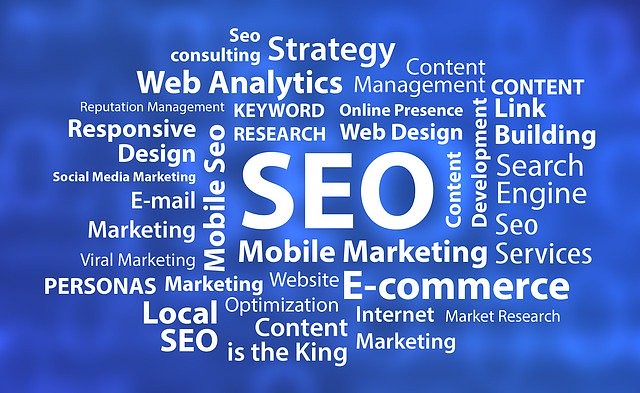- We take your business to new heights
- support@growmybusinessonline.com.au
SEO and Web Design For Traffic and Business Branding

Elements of a Mobile-Friendly Web Design
September 23, 2020
How Does Google My Business Grow Your Small Business Online?
November 4, 2020SEO and Web Design are the two frameworks that are vital for the online success of every business whether big or small. SEO makes sure your website is search engine friendly; while web design makes it sure that your website is user-friendly. Below is an expert opinion on how SEO and Web Design collaborate.
The bottom line to set up a successful online business is to get as much targeted traffic as you can to your site. However, this is easier said than done because there is no one strategy you can apply.
Website owners do consider SEO because it helps climb the search engine rankings, but website design is a component that is often neglected. It’s only worked on for the sake of aesthetics.
If you want to know how SEO and website design can impact your growth potential as a business, you should read on.
Related Posts:
- How Google My Business Your Online Business?
- How is Your Business Adapting to COVID-19?
- 5 Reasons To Build a Mobile-Friendly Website
Good Website Design
Website design determines user experience, hence, is significant. Bad user experience will eat into traffic.
Load time – The layout, the visuals and design elements have a major say in how fast your website loads. Slow-loading websites are a major put off. Studies show that people wait for only 3-5 seconds for a page to load. If it doesn’t, they switch.
Layout – Very busy and complex layouts complicate the eye. How you structure your content also affects your ability to built trust. Important content should be visible at a glance; place it front and centre. Having to click through repeatedly can get very annoying. Keep everything easily accessible.
Visuals, font and colour schemes – It is advised that you do not use stock photography. Also, do not use too many visuals on-page; it gives a cluttered look. Avoid premade templates; work with a web designer to craft a design that reflects the motto and practices of your business.
Small and excessively cursive font styles are hard to read. The colour scheme you choose should not be too jarring and neither too dull. Keep the look and feel consistent throughout. Use colours strategically across your website with bolder colours for headlines.
Poor web design can make it impossible for users to read what they came to your website to do.
Pages with blocks of content in strange places, with too many hyperlinks that don’t serve a clear purpose, essentially erases any audience that you managed to bring onto your site.
And if no one can get the information they want, what’s the point?
Mobile optimization – Given the multi-functionality of smartphones, we use it for making phone calls, texting, chatting, checking emails and web browsing as well. Hence, responsiveness to mobile platforms is the watchword. Otherwise, you will have to set up and maintain two sites and it can get quite overwhelming.
The number of people searching on desktops has been declining for a few years now, while the number of people searching on mobile devices has been steadily increasing.
More than half of all web traffic is coming from mobile devices, which means that more than half of your audience is also likely to be on their mobile phones.
Without a mobile-friendly website design, you could be accidentally alienating half of your users. That is massive.
A website with a high bounce rate due to not loading properly on a phone or tablet is going to send bad signals to Google, and your rankings could plummet.
Pop-up advertisements – Although you are looking to monetize your website with all those ads, it’s distracting if one suddenly pops up while you were engrossed in reading. If you must include ads, keep them in prominent places but not where they would interfere with other activity.
Use HTML5 to increase page views. When designing your website, opt for design trends that will stand the test of time; those you won’t have to keep upgrading.
Search Engine Optimisation
Search Engine Optimization (SEO) takes care of the content aspect of your website. It is the SEO practices that get you exposure on search engines.
To start with, create rich content, that’s informative, easy to understand, authentic and reliable.
Instead of saying everything on one page, plan a particular topic for each page. Target a specific keyword for every page. This strategy helps because the search engine bots crawl from one page to the next when indexing websites.
Look up the list of high ranking keywords for your respective niche and include them in post-content and meta-tags. It should also be included in the title and Meta description. Keywords help your content to be found.
Break up your content so that it is easier to read. Use bullets and numbering. Use subheadings so that website visitors can choose what they want to read rather than having to read everything. Divide the content into paragraphs.
SEO Agency Sydney
If you need a hand with SEO and web design to get your website on the 1st page of Google, you can contact us for an affordable SEO and Web Design for your small business.
Our Digital Marketing Services:
Article Source: [http://EzineArticles.com]




